Spotlight on Martin Smith-Rodden
Aug 4, 2014
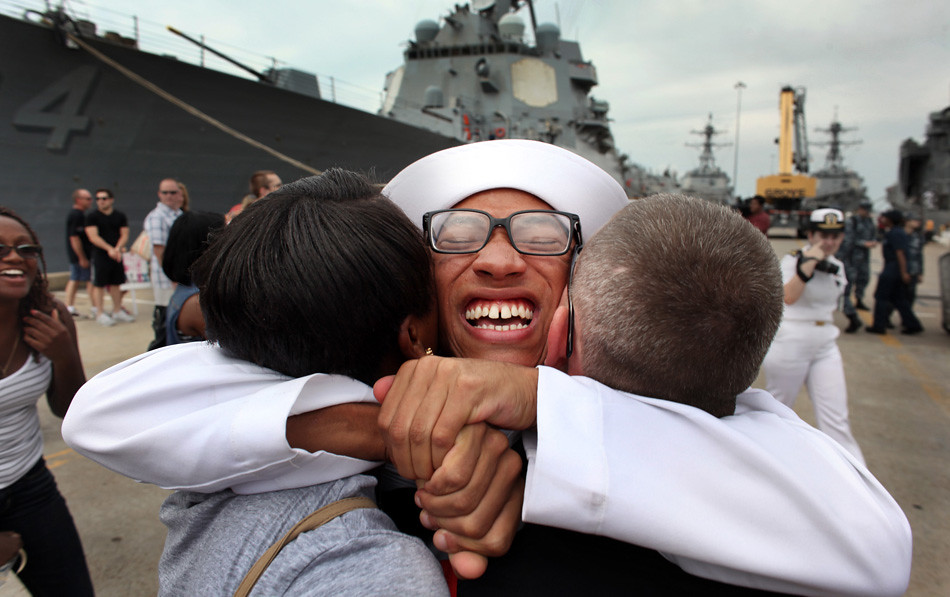
TID:
This is a wonderful image, lovely and so nice to see. Can you tell us a little of the backstory?
MARTIN:
First, thanks so much for allowing me to talk about this image and for the chance of being part of The Image, Deconstructed. This is a great resource for mindful approaches toward photojournalism - so I think it’s a real honor to be featured. Well, I should start off by explaining my own current work situation… There was some downsizing at The Virginian-Pilot earlier this year. As part of that restructuring, my position as a team-leader and photo editor was eliminated, as upper-management here was culling out the editor ranks in favor of keeping “boots on the street” with regard to front-line reporters and photographers.
Management offered me the choice to stay on at the newspaper as a staff photographer, and I agreed. While being an on-the-street photojournalist was always my first passion, this transition was a bit rattling. My carefully cultivated, 9-year career in photo editing and leadership was held in abeyance while I reacquired my photojournalism skills, which were little-used for almost a decade. I also worked hard to learn to use the new Canon systems (I’ve been a Nikon shooter throughout my entire life). On the upside: I’ve always been drawn toward meaningful work – and photojournalism in all of its forms, is clearly that. It's in my nature to push past roadblocks… plus, I think if you can make it through a downsizing and still have a job, then it’s a good day.
So then, it was just past my first month back as a shooter – and I was still feeling like a “born-again rookie” – when I was assigned to photograph the return of the USS Elrod to Norfolk Naval Base in July. It was a fairly routine homecoming from a six-month Mediterranean Cruise for the Elrod. The Elrod is an Oliver Hazard Perry-class frigate, a general-purpose escort vessel, which among U.S. Naval vessels, is a relatively modest-sized warship in the fleet, with a crew compliment of just over 200 officers and enlisted.
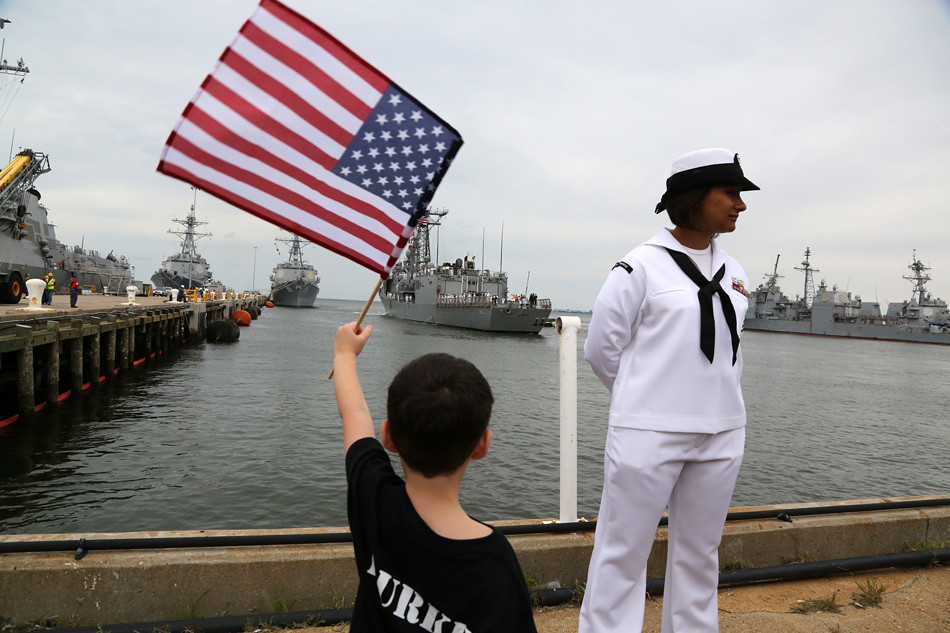
The ship’s arrival was early on a Saturday morning, and the Elrod was the only warship expected home that day. So, it wasn’t necessarily considered a huge homecoming, plus the crowd was moderately sized and visibly tired at that early hour. There was no band or music to stir the people up as there often is for larger pierside events. So, I was struck by what seemed to be a lack of the usual energy and excitement of a homecoming. Normally at these things, it’s easily to feel a little overwhelmed at all the excitement and opportunities for strong emotional photos – to the point that one isn’t sure which of the numerous opportunities should be shot first. However for this one, I realized quickly that this was a situation that required me to “work it” a bit. The Navy public information personnel who were escorting me gave me ample freedom to roam through the crowd and try to find small moments of anticipation among the crowd and families as the ship tied up.
TID:
For those who are not used to working with the military, can you advise how one works within such systems and events?
MARTIN:
For homecomings this is easy. Most of the people there waiting at pierside are Navy families and friends– and just “normal people.” Also, they are reasonably happy people at that time. It’s easy to approach families there, share in their joy, congratulate them, wish them well and shoot strong pictures. After all, they are not focused on you, the photojournalist – they are focused on a large gray ship approaching the pier that’s carrying their loved one on the deck.
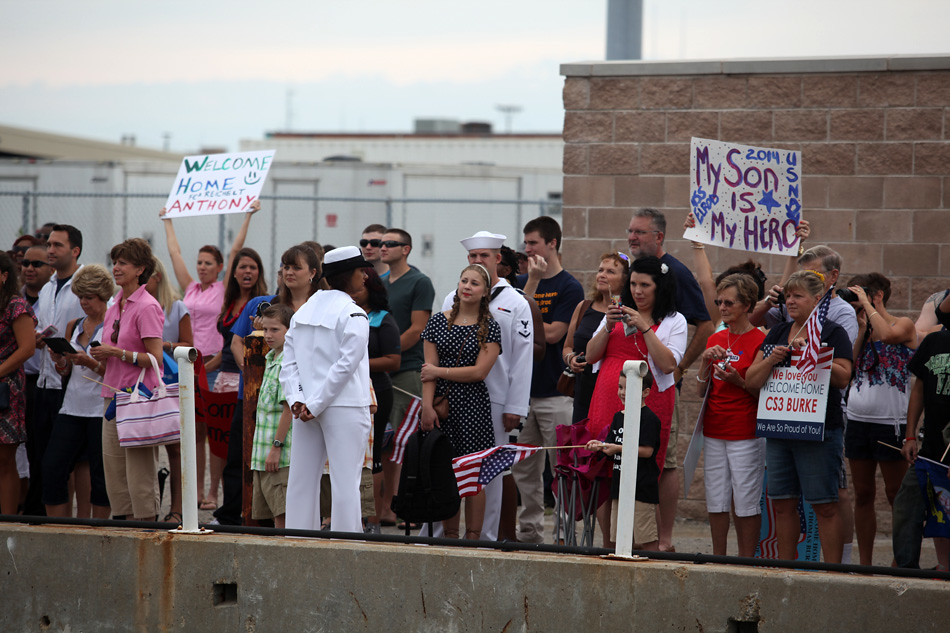
I rarely have any problem getting cooperation and access from the Navy Public Information Office personnel at pierside – I’m very respectful of their roles and boundaries, and proceed courteously, cautiously, and purposefully. A homecoming, among other things, is a mooring operation of a large warship – which means it’s inherently complex and dangerous. So, I stay away from people handling the lines from the ship, let folks do their jobs, stay out of the way, and generally “keep my radar on.”
TID:
Homecoming emotions usually happen so fast. What challenges did you encounter while working to make this image?
MARTIN:
Well, my biggest challenge was to find a strong emotional picture to base my visual report around. Usually, we plan on having just a couple of images in the printed product (the newspaper) with an expanded slideshow online. So I’m looking for the important images with impact, but also mindful of shooting crowd pictures, and showing some diversity among the people I shoot.
TID:
How did you handle and overcome these problems?
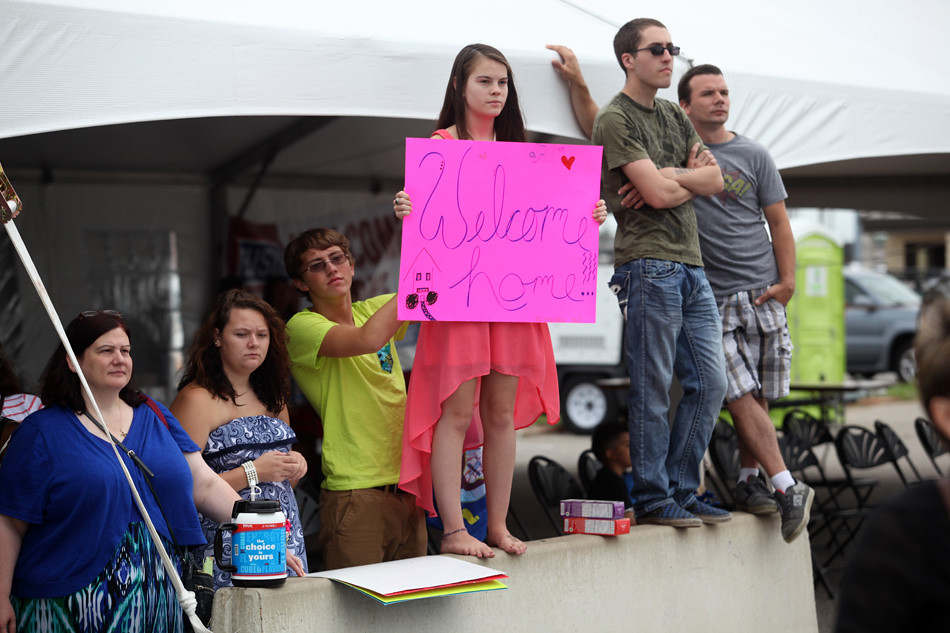
MARTIN:
Well, given what I said earlier about the restrained nature of the crowd, I had hoped the returning crew would show excitement the return, and maybe that crewmember’s emotion would be contagious. My job was to maintain my focus and attention so I could find and jump on any moment that told the story in an animated and emotional way.
TID:
Now, onto the moment.Can you talk about the moments leading up to the picture and also the actual moment?
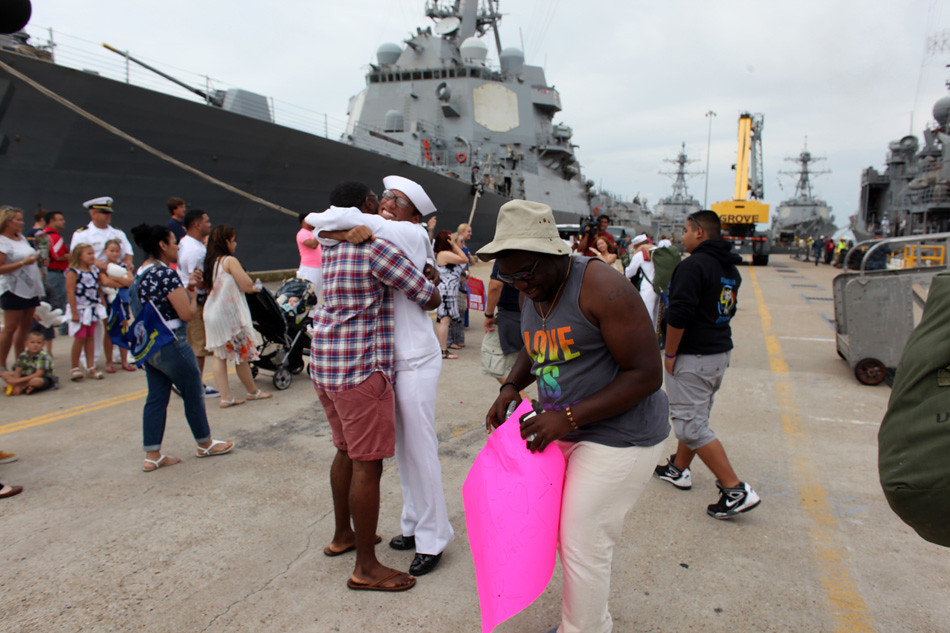
MARTIN:
As the crew slowly started to disembark the mood of the crowd elevated visibly. The embraces were usually very brief. They were warm and genuine, but to some extent reserved and measured. These were good pictures but not great pictures. Then Petty Officer Third Class Michael Williams, a Cryptological technician from Miami, came off the ship and I saw him start through and hugging several friends who came to greet him on the pier.
I was excited to see him for a couple of reasons. First, up to that point, I didn’t have strong diversity among the subjects in my pictures that morning, and knew that my overall shoot so far had been “overwhelmingly white.” So initially, I was relieved to have a good representation of minority sailor in my shoot that morning. However as I continued to watch and photograph Michael reacting as he greeted his family and loved ones, I was struck by how unabashed and ebulliently joyous he was. He was certainly the happiest person I saw on that pier that morning, and arguably among the happiest of returning sailors I’ve ever seen in 28 years of shooting homecomings in Norfolk.
TID:
What surprised you about the moment?
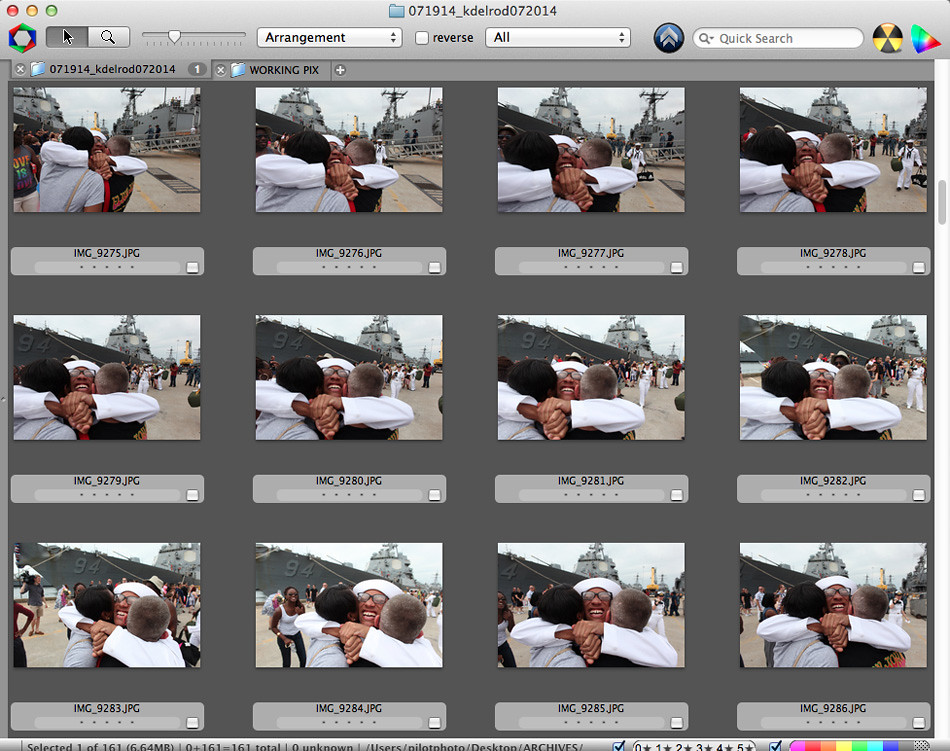
MARTIN:
Well it was surprising how long Michael expressed his very genuine joy. After all, the decisive moment is, by definition, not a terribly long time. But Michael’s hugs and celebrations lasted at least a minute or more – and in the world of a photojournalist: that’s an eternity. So, he was exuberantly hugging each one of his people there, from person to person... and I just kept on shooting and shooting. It seemed to last a very long time.
Michael later shared with me that this was his longest deployment, and the length of the cruise took an emotional toll on him. Seeing that many of his friends there waiting for him on the pier, overwhelmed him in an emotional rush and made him feel amazing, as he’d not felt in a very long time while under way.
I have other good friends who served in the Navy that describe the long deployments as being among the most difficult things they’ve ever done. So then, imagine after the long and often lonely ordeal of a deployment, to come home and be surprised by seeing several of your closest friends there on the pier waiting for you… The extent of Michael’s joy, in this context, is hard for anyone who isn’t active military to imagine. It’s one of those rare times you have the honor and good fortune of photographing pure elation. As both a photojournalist and also a psychologist, I felt it was an achievement for me to capture something that showed this. From a psychological perspective, it’s as important an image as I’ve ever made.
TID:
What have you learned about yourself in the process of making images like this?
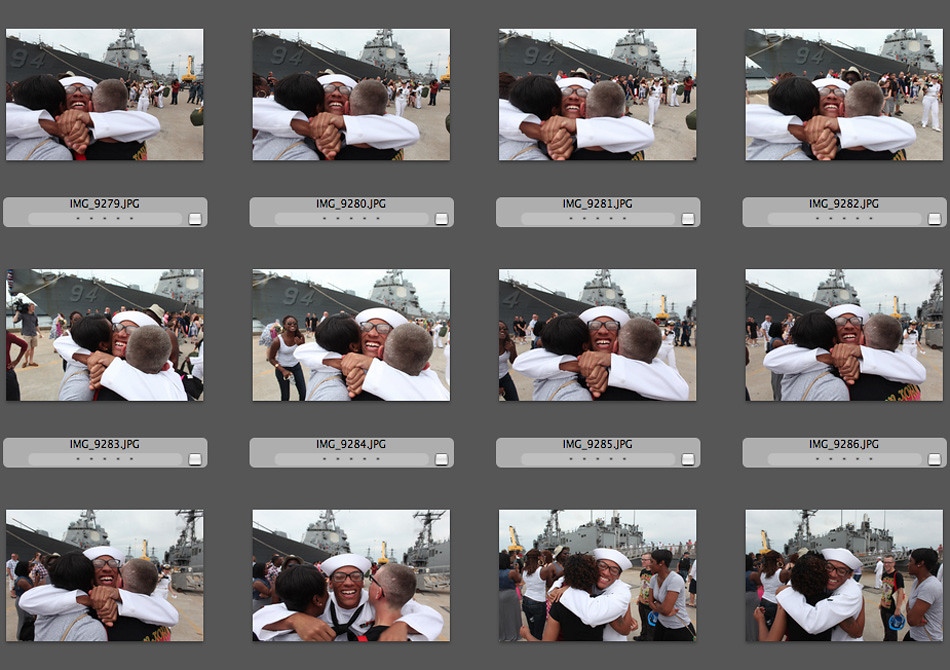
MARTIN:
Well, I can’t deny that it’s a great feeling to know that I can still make great images after spending years behind the desk.
But it’s also gratifying to have a chance to photograph something with such positive emotional content. As journalists (and psychologists) we are often compelled toward the darker and more negative subjects. Those gloomy themes and topics tend to be more gripping, grab people’s attention, elicit stronger reactions and are – from a psychological perspective – more “cognitively activating”. And certainly, news professionals and organizations receive a lot of criticism for the “lop-sided” depictions of humanity by concentrating on and over-representing negative news content. After a while one begins to wonder, “is this all there is?” or “are we capable of anything else?”
Encountering and catching a moment such as this – that’s so genuine and depicts the best parts of humanity – is as reaffirming as it is a lovely and amazing privilege.
TID:
What have you learned about others?
MARTIN:
As a lifelong photojournalist, as well as a psychologist, one wouldn’t think people could easily surprise me. But people can always surprise you. As a photojournalist, it’s your job to be prepared for it.
TID:
In conclusion, what advice do you have for photographers who want to cover such events?
MARTIN:
Just approach the job purposefully and professionally, stay engaged and psychologically nimble, find your confidence and optimism. And yeah, give it your all. Every day.

:::BIO:::
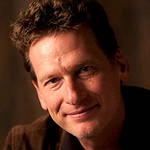
Martin Smith-Rodden has been a photographer for daily newspapers since 1981, in markets such as Washington, D.C., (The Journal Newspapers, 1981 through 1983), San Antonio, Texas, (The San Antonio Light, 1983 – 1986), and in Hampton Roads (1986 through present). His work has taken him to earthquake scenes in Mexico City, coverage of hurricanes (too many to count), military actions in Bosnia, Haiti and The Persian Gulf, Kuwait and Iraq. In 1996 he was honored by being named the National Press Photographers Association’s photographer of the Year for Region 3 (mid-Atlantic). He served in various capacities as the Photo Editor at The Pilot since 2005, and a team leader in the Photography Department since 2006. He was named the National Press Photographers Association Photo Editor of the Year for 2011. In June of this year he returned to his original passion as a staff photojournalist.
Martin received a degree in social sciences from Virginia Wesleyan College, holds a Master of Science in Cognitive Psychology and a doctorate in Applied Experimental Psychology from Old Dominion University. His academic interests are media psychology, social cognition, and decision making. He currently teaches as an adjunct psychology professor at both Virginia Wesleyan College in Norfolk and South University in Virginia Beach.
Martin is married to veteran journalist and marketing executive Pam Smith-Rodden. They have two children, Wilson and Kate. They enjoy a life on the waterfront, in an old house in the West Park View neighborhood of Portsmouth, overlooking beautiful Scotts Creek.
HIs website is located here: http://bit.ly/HxkIBX